Link para o artigo original : https://www.oaktreecapital.com/insights/insight-commentary/market-commentary/the-roundup-top-takeaways-from-oaktrees-quarterly-letters-4q2022
The Roundup: Top Takeaways From Oaktree’s Quarterly Letters – 4Q2022
The investment world may be experiencing the third true sea change of the last 50 years, as Howard Marks recently wrote. In order for investors to find their bearings during this tumultuous period, we believe it’s essential to look closely at the trends that are impacting – and, in some cases, reshaping – various asset classes. In the current installment of The Roundup,1 Oaktree portfolio managers discuss important developments that they’ve observed over the last few months, including the shifting balance of power in fixed rate debt, trends that are benefiting multifamily real estate, and the dramatic downward shift in risk sentiment among direct lenders.
1
Global Credit:
Be Prepared

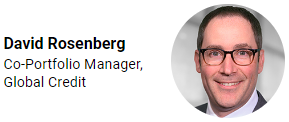

In the coming months, we expect investor sentiment to oscillate between hope and fear, as it has throughout much of 2022. Investors appear to be basing investment decisions largely on their expectations regarding Federal Reserve policy, inflation, geopolitical unrest, and other macroeconomic factors that we believe can’t be predicted consistently. (See Howard’s memo The Illusion of Knowledge for Oaktree’s view on the usefulness of macro forecasting.)
For example, consider the “dovish pivot” narrative that has likely been a key driver of the recent market rally. Investors appear to believe that the Fed will not only soon stop hiking interest rates but will also begin to lower them in the next 12 months in response to a mild economic slowdown. This is obviously possible, but based on the Fed’s communications, it seems more likely that it will only do so in response to a highly negative event, such as a deeper-than-anticipated recession, a geopolitical crisis, or a market failure – all of which would likely cause credit spreads to widen significantly. We’re not predicting any of these events, but we think it’s optimistic to assume that we’ll see both a true dovish pivot and a soft (or at least not-so-hard) landing by the Fed.
We believe it’s far easier to navigate challenging markets today if you’ve taken the proper precautions in the past. That is, if you focused on bottom-up credit underwriting at the time of investment to make sure you knew what you were buying. This can give investors the confidence to hold on to their assets through mark-to-market volatility and to add to these positions at dislocated prices. As we always say, we can’t predict, but we can prepare.
2
Fixed Rate Debt:
Power Play
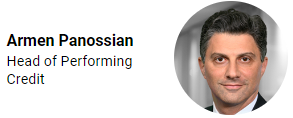
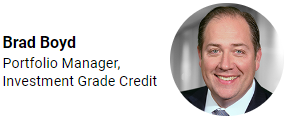

In the previous decade, credit was decidedly a borrowers’ market, as investors searched for yield in a low-return world, often accepting weak investor protections and high dollar prices. However, this situation changed markedly in 2022, along with the risk/reward profile of fixed rate debt. For the first time in many years, investment grade corporate debt is providing investors with reasonable yields above 5.0%.2 Meanwhile, high yield bonds are offering yields north of 8.0% and an average price below 87 cents on the dollar, compared to 4.3% and 103 cents at the beginning of 2022.3 (See Figure 1.) Importantly, this dramatic change hasn’t been driven by rising default expectations or a systemic shock to the market, but rather the upward move in interest rates.
We recognize that a recession could be looming, and stress may be growing in highly levered segments of the credit markets. But we believe default risk is concentrated among (a) private equity-sponsored portfolio companies with high leverage and significant exposure to floating-rate financing and (b) issuers of CCC-rated bonds that are facing maturities in the next two years. The fundamentals of most issuers in the fixed rate market remain sound. Many investment grade companies have significant cash cushions that can help them weather an economic downturn. Meanwhile, quality in the U.S. high yield bond market has increased significantly in recent years, with the percentage of BB-rated debt now near the highest level in the last decade.4
In short, we think credit risk hasn’t changed meaningfully in this market even though pricing has. This means credit investors are now in a position to purchase securities at meaningful discounts to par without having to invest in illiquid products or companies with questionable fundamentals. While 2022 was an extremely challenging year for fixed rate debt due to the spike in interest rates, this sell-off has flipped the balance of power in this market. Investors – not issuers – now appear to have the upper hand.
Figure 1: Yields on Investment Grade and High Yield Bonds Have Risen Meaningfully

Source: ICE BofA Current 10-Year US Treasury Index, ICE BofA US Corporate Index, ICE BofA US High Yield Constrained Index
3
Emerging Markets Equities:
Value Judgment
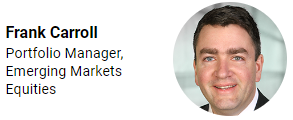
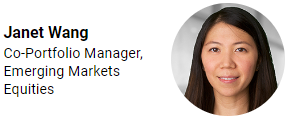
Emerging markets equities have faced many headwinds in 2022, including some, such as tightening monetary policy, that emanated from developed markets and others that came from specific EM countries, most notably China and Ukraine. Consequently, the asset class significantly underperformed its developed market peers in the first 11 months of the year, weakening by 19.0% in the period versus a loss of 13.1% for the S&P 500 Index.5 While macroeconomic trends may continue to cause turbulence globally, we think that EM equities – especially value stocks – are well positioned and could therefore have a smoother ride moving forward.
Importantly, value equities, which have historically outperformed in inflationary environments, continue to trade at a significant discount to growth stocks in both emerging and developed markets and thus have substantial room to appreciate. EM equities arguably offer a better risk/reward profile than their developed market counterparts, given that EM valuations are lower on both a price/earnings and price/book basis. Indeed, in EM equities, both metrics are currently near their 15-year lows.6
Additionally, we believe many EM currencies are currently underpriced based on EM countries’ share of the global export market. (See Figure 2.) For example, in the third quarter, the Korean won fell to its lowest level against the U.S. dollar since March 2009. While the value of the greenback has recently declined from decade-high heights, EM currencies still have plenty of space to appreciate before reaching more normal levels versus the U.S. dollar.
Finally, commodity-producing companies, which make up a large portion of the EM value equities universe, still have strong fundamentals on average despite commodity price volatility. In particular, cash flow generation remains healthy overall. Moreover, we think the fall in many commodity prices that we’ve witnessed in the latter half of the year is unlikely to accelerate. First, we haven’t seen significant demand destruction despite declining sentiment concerning economic growth. Second, we think uncertainty about the global economy will likely impel commodity-producing companies to remain disciplined in their spending and capital expenditures – and thus limit the growth in supply of various commodities.
In short, we acknowledge that the macroeconomic backdrop remains cloudy, but we believe the medium-term outlook for EM shareholders is bright.
Figure 2: EM Currencies Are Weak in Relation to Their Global Export Market Share

Source: Credit Suisse Research, Refinitiv, as of September 30, 2022
4
Real Estate:
Mind the Gap
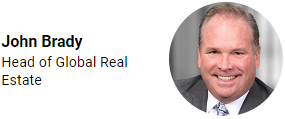
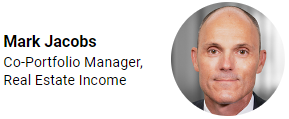
In recent months, we’ve frequently been asked whether rising interest rates will inevitably result in higher cap rates.7 While we agree that elevated interest rates will put upward pressure on cap rates – as we’ve already begun to see on average in most sectors – we believe the impact is likely to vary significantly based on the market, sector, and quality of the asset. Notably, the cap rates for both multifamily properties and industrial warehouses with relatively short-duration leases increased less during recent quarters than the cap rates in other real estate sectors. This is primarily because these two sectors experienced rapid growth in net operating income, which outpaced the rate of inflation and partially offset the impact of rising interest rates.8
Consider the multifamily sector. Several factors have been responsible for the outsized rent and NOI growth enjoyed by multifamily properties in recent years, but one key driver has been the widening spread between the monthly averages for residential mortgage payments and residential rents. In the largest U.S. markets, this gap has grown massively in the last two years.9 (See Figure 3.) This trend has been driven by (a) the shortage of housing in the U.S., which has led to significant home price appreciation, and (b) the fact that residential mortgage rates have more than doubled since January 1. We believe the growing gap between mortgage and rent payments will force many potential homebuyers to rent for a significant period of time. This will likely boost demand for multifamily properties and give owners of these properties more pricing power, even in a challenging economic environment.
Figure 3: The Difference Between Rent and Mortgage Payments Is Growing

Source: John Burns Consulting, CoStar
Note: U.S. average entry-level home payment is calculated by John Burns Real Estate Consulting with data from the top 100 markets in the U.S. Entry-level home cost assumes 5% down on a 30-year fixed-rate mortgage and is calculated using principal, interest, tax, and insurance plus mortgage insurance. Average monthly market rent is calculated by CoStar using data from the top 390 markets in the U.S.
5
Global Convertibles:
Playing Catch-up
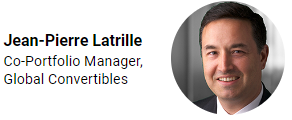
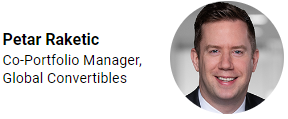
We believe that convertible bonds may soon begin to regain market share lost to high yield bonds over the last decade. Since the Global Financial Crisis, issuance of high yield bonds has dramatically outpaced activity in the convertibles market. (See Figure 4.) In the period from 2000 to 2007, the U.S. high yield bond market was roughly double the size of the convertibles market. However, since 2007, the U.S. high yield bond universe has expanded by approximately 80% due to robust primary market activity, while issuance in the U.S. convertibles market has stagnated in comparison. As a result, the U.S. high yield bond market is now roughly five times the latter’s size.
This dramatic shift is largely the result of the ultra-low interest rates that prevailed following the GFC. Investors’ search for yield in this environment enabled companies – including those with limited earnings – to borrow in the high yield bond market at rates that wouldn’t have been considered high in previous years. And they could typically do so while offering few investor protections. Thus, issuing convertibles – and providing equity upside in exchange for a slightly lower interest rate and fewer covenants – became far less appealing to many borrowers.
Fast forward to today, and we think the situation might be changing. The dramatic rise in interest rates in 2022 has caused the average yield of U.S. high yield bonds to jump to 8.5% from 4.7% on January 1.10 We believe that issuers around the world are likely to increasingly turn to convertibles to potentially lower their borrowing costs. Consider that the average coupon for U.S. convertibles issued in the fourth quarter, through mid-December, is 4.4%.11 U.S. high yield bonds with similar duration issued during the same period are trading with an average yield of 9.1%.12
We aren’t the only ones anticipating a pickup in issuance in this market. Bank of America recently published a survey showing that 78% of investors expect convertibles issuance in the next 12 months to exceed the amount in the previous year. We believe that the more borrowers migrate toward this market, the higher the quality of new issuance will be – and thus the better the average risk/return profile will potentially become. While we aren’t predicting that convertibles will ever regain all of the ground they’ve lost to high yield bonds, we do anticipate that they could begin to narrow the gap.
Figure 4: The High Yield Bond Market Ballooned as the Convertibles Market Stagnated

Source: ICE BofA Non-Financial Developed Markets High Yield Constrained Index, ICE BofA U.S. Convertibles Index , as of October 31, 2022
6
Middle-Market Direct Lending:
Into the Void

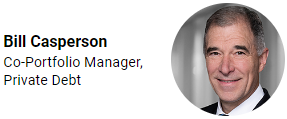
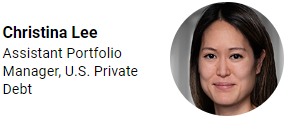
In 2022, direct lending has become much less competitive, highlighting the rapid downward shift in risk appetite in this market. During the prior decade, when liquid credit offered paltry returns and the reference rates for loans were ultra-low, many investors aggressively chased direct lending deals with high-quality borrowers. As competition intensified, investors often lowered the cost of capital and gave up lender protections in order to win deals. But this situation has now changed dramatically.
Several large direct lenders that aggressively raised and deployed capital over the last few years have become much more conservative in recent months. Many have slowed their investment pace and reduced the size of their new investments to a fraction of what they were just six months ago. Moreover, as the economy has weakened and yields have risen, direct lenders have not only become less willing to finance new companies, but they’ve also become less apt to extend additional capital to their existing portfolio companies unless they receive higher pricing on all of their exposure.
This newfound conservatism among many direct lenders has multiple causes. First, less capital is flowing into the asset class. (See Figure 5.) Fundraising has slowed considerably in 2022, and banks have become less willing to extend fund-level leverage to direct lenders.13 Next, we suspect that the portfolios of many direct lenders are beginning to show signs of weakness, as mid-sized companies in many sectors are reporting declining revenue and narrower profit margins, due to the rising cost of wages, raw materials, freight, and other inputs.
As a result of the above, direct lenders that remain active today are increasingly in a position to demand better pricing and stronger covenants. Importantly, the coupons available to these lenders have increased significantly in 2022, as reference rates have skyrocketed and yield spreads have widened. We believe this striking change in market sentiment will benefit those lenders that invested prudently in the past – as they’ll likely have fewer problems in their existing portfolios – and those that have the capital to take advantage of the winning opportunities likely to be created in a less-crowded playing field.
Figure 5: Fundraising for Direct Lending Funds Has Declined Sharply in 2022

Source: Preqin, as of October 31, 2022
7
Special Situations:
Pay the Piper
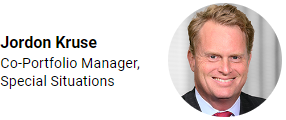

One of the most significant dynamics affecting our markets in 2022 has been the rapid speed at which the cost of leverage has increased – a trend that almost no one foresaw. In particular, we’ve been monitoring the impact this phenomenon is having on highly levered, sponsor-owned portfolio companies. During the post-2009 period – when interest rates were near zero and the threat of elevated inflation was practically nonexistent – leveraged buyout sponsors ramped up their use of debt. The average leverage ratio of an LBO transaction hit a record high of 6.5 times adjusted EBITDA in 3Q2022.14
Importantly, only a limited number of these sponsors hedged their portfolio companies’ exposure to variable interest rates, meaning many of these companies’ borrowing costs have effectively doubled in 2022 and will rise even more as the Fed continues to increase interest rates.15 This is occurring at a time when economic growth is slowing and companies’ margins are compressing, all of which will squeeze companies’ free cash flow.
The recent turn in events could prove to be a rude awakening for many sponsors. The average yield of leveraged loans used to finance LBOs is just under 10% – a post-Global Financial Crisis high and more than double the post-GFC low recorded only 19 months ago.16 (See Figure 6.) Given these high financing costs, sponsors of new LBOs won’t be able to earn a reasonable return by simply engaging in financial engineering; they’ll need to carry out true operational improvements. And that’s assuming these deals get done at all.
As we noted last quarter, we’re not yet in the midst of a systemic distressed cycle, but it isn’t difficult to picture one waiting on the horizon – especially as more over-levered companies face rising borrowing costs. It might only take a bad quarter or two, weaker 2023 guidance from a large number of companies, or continued tightening by the Fed for a massive buying opportunity to develop.
Figure 6: The Average Yield for Leveraged Loans Used To Finance LBOs Has Spiked

Source: Pitchbook Leveraged Commentary & Data
ENDNOTES
1 The content is derived from or inspired by ideas in 3Q2022 letters or other materials sent to clients in 4Q2022; the text has been edited for space, updated, and expanded upon where appropriate.
2 ICE BofA US Corporate Index, as of December 5, 2022.
3 ICE BofA US High Yield Constrained Index, as of December 5, 2022.
4 ICE BofA US High Yield Constrained Index, as of December 5, 2022.
5 MSCI Emerging Markets Index (Net).
6 Bloomberg, as of December 5, 2022.
7 Capitalization rates, or cap rates, measure the rate of return on a real estate investment, based on the asset’s net operating income and value.
8 Based on Oaktree observations in the market, as of December 14, 2022.
9 Oxford Economics, John Burns Consulting, CoStar; as of September 30, 2022.
10 ICE BofA Single-B US High Yield Index, as of December 5, 2022.
11 BofA Global Research, as of December 5, 2022.
12 BofA Global Research, as of December 5, 2022.
13 Derived from Oaktree estimates based on funds seen in the market, as of November 30, 2022.
14 Pitchbook LCD, as of September 30, 2022.
15 Based on Oaktree observations in the financing markets, as of December 14, 2022.
16 Pitchbook LCD, as of September 30, 2022.
©2022 Oaktree Capital Management, L.P.
Informações sensíveis e divulgação
Este memorando expressa as opiniões do autor na data indicada e tais opiniões estão sujeitas a alterações sem aviso prévio. A Oaktree não tem a obrigação de atualizar as informações aqui contidas. Além disso, a Oaktree não faz nenhuma representação, e não se deve assumir que odesempenho dos investimentos passados é uma indicação de resultados futuros. Além disso, onde quer que haja potencial de lucro, também existe a possibilidade de prejuízo. Este memorando está sendo disponibilizado apenas para fins educacionais e não deve ser usado para qualquer outro propósito. As informações contidas neste documento não constituem e não devem ser interpretadas como uma oferta de serviços de consultoria ou uma oferta de venda ou solicitação de compra de quaisquer títulos ou instrumentos financeiros relacionados, em qualquer jurisdição. Certas informações contidas neste documento sobre tendências econômicas e desempenho são baseadas ou derivadas de informações fornecidas por fontes terceirizadas independentes. A Oaktree Capital Management, L.P. (“Oaktree”) acredita que as fontes das quais tais informações foram obtidas são confiáveis; no entanto, não pode garantir a exatidão de tais informações e não verificou de forma independente a exatidão ou integridade de tais informações ou as suposições nas quais tais informações se baseiam. Este memorando, incluindo as informações aqui contidas, não pode ser copiado, reproduzido, republicado ou postado na íntegra ou parcialmente, em qualquer formato, sem o consentimento prévio, por escrito, da Oaktree.

